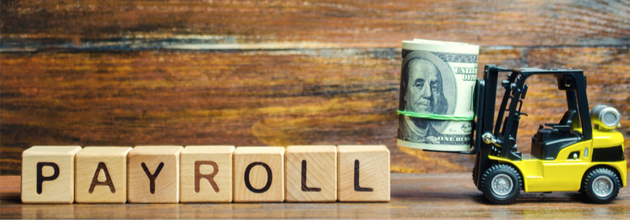- Today's monthly jobs report will provide more clarity on the current economic landscape, with the prior two accounts telling very different stories. Payrolls were forecast to have risen by nearly 1M in April, only to come in at a mere 266K (the biggest downside miss in decades), after the employment number increased by 770K in March, which suggested a strong rebound from the pandemic. Fresh figures for May will shed further light on the true state of the recovery, influencing policymaking on both the fiscal and monetary fronts.
By the numbers: Economists expect the report to show that non-farm payrolls increased by 650,000 jobs, marking a significant acceleration from last month's tepid gains. The unemployment rate is also expected to have fallen to 5.9%, from 6.1% in the prior month, while average hourly earnings likely rose 0.2%, after gaining 0.7% in April. The jobs report will follow a robust economic picture seen yesterday as initial jobless claims fell below 400,000 for the first time since the onset of the coronavirus pandemic in March 2020.
Strong increases in employment creation could ease some concerns about labor shortages, which have been seen across the country as the economy reopens at a record pace. While there are many reasons for the hiring scarcity, Republicans have pointed to programs like enhanced unemployment benefits, while Democrats have flagged items like childcare responsibilities and lingering COVID-19 worries.
Outlook: "A repeat of April's weak report could mean the Fed will not taper back its bond purchases until sometime next year," according to economists at Citigroup. "However, a stronger increase (+1M) would keep the June FOMC meeting on the table for a possible signal 'well ahead' of tapering later this year." The Fed is currently buying $120B of Treasurys and mortgage securities each month, and has said it would slowly wind down its purchases before raising interest rates.
| TOGETHER WITH  |
|---|
|
| | Top News  Shutterstock Today's monthly jobs report will provide more clarity on the current economic landscape, with the prior two accounts telling very different stories. Payrolls were forecast to have risen by nearly 1M in April, only to come in at a mere 266K (the biggest downside miss in decades), after the employment number increased by 770K in March, which suggested a strong rebound from the pandemic. Fresh figures for May will shed further light on the true state of the recovery, influencing policymaking on both the fiscal and monetary fronts.
By the numbers: Economists expect the report to show that non-farm payrolls increased by 650,000 jobs, marking a significant acceleration from last month's tepid gains. The unemployment rate is also expected to have fallen to 5.9%, from 6.1% in the prior month, while average hourly earnings likely rose 0.2%, after gaining 0.7% in April. The jobs report will follow a robust economic picture seen yesterday as initial jobless claims fell below 400,000 for the first time since the onset of the coronavirus pandemic in March 2020.
Strong increases in employment creation could ease some concerns about labor shortages, which have been seen across the country as the economy reopens at a record pace. While there are many reasons for the hiring scarcity, Republicans have pointed to programs like enhanced unemployment benefits, while Democrats have flagged items like childcare responsibilities and lingering COVID-19 worries.
Outlook: "A repeat of April's weak report could mean the Fed will not taper back its bond purchases until sometime next year," according to economists at Citigroup. "However, a stronger increase (+1M) would keep the June FOMC meeting on the table for a possible signal 'well ahead' of tapering later this year." The Fed is currently buying $120B of Treasurys and mortgage securities each month, and has said it would slowly wind down its purchases before raising interest rates.
   | |
| Stocks U.S. stock futures inched between slight gains and losses overnight after the major averages trended down in Thursday's session as the meme trade faltered (more on that below). Other social media sensitive areas of the market, like crypto, also headed lower, with Bitcoin (BTC-USD) slipping 6.6% to $36,510. The culprit? Elon Musk tweeted a meme about a couple breaking up, adding the hashtag #Bitcoin and a broken heart emoji.
What happened to the meme trade? Just a day after taking a renewed embrace of retail traders, offering them special screenings and free popcorn, AMC Entertainment (AMC) used the spike in its stock to raise even more capital by selling 11.5M shares. It also came with a stark warning: "The market prices and trading volume of our shares of Class A common stock have recently experienced, and may continue to experience, extreme volatility, which could cause purchasers of our Class A common stock to incur substantial losses." Meanwhile, Jefferies and Raymond James blocked sales of AMC shorts, adding to the news that saw the stock tank 18% during the session, and fall another 5% premarket to below $50.
The tumble back to earth was set to happen sooner or later, with Wall Street pros cautioning that these swarms only survive until the last "gambler" is left holding the bag. AMC's plunge was felt across the broader meme sector, with Bed Bath (BBBY), Koss (KOSS) and GameStop (GME) sinking 27%, 24% and 8%, respectively. BlackBerry (BB) was one of the only names to buck the trend, rising 4% on Thursday.
YouTube appearance: In an interview last night, Aron said proceeds from another equity sale, if approved, would be used to reduce debt and to help the company negotiate with landlords who are owed $400M. The funds will also go to chase acquisitions. "If you arm us with the tool, meaning stock as the tool, to go find value-creating opportunities for AMC shareholders, we can do that," he told Trey's Trades. "If we are not armed with this tool, then you're tying our hands behind our back and you'll make it just that much harder for us to land some of these attractive opportunities that could benefit us all."    | |
| Sponsored By Robinhood  We believe that everyone should have equal access to financial tools. Regardless of how much money you intend to invest, you will not be charged account minimums or commissions to buy or sell stocks, ETFs or Options on Robinhood. And if you open an account today, you can receive a free stock valued between $2.50 and $200 to get you started. Certain limitations apply.
Download now and get started. | |
| Media Facebook (FB) plans to end its special treatment rules for politicians, according to The Verge, leaving behind an approach that was upended in the last days of the Trump administration. Going forward, elected officials will face rules in a manner similar to any other user on the platform, which could have big ramifications for how world leaders use the network. The decision follows criticism from Facebook's quasi-independent Oversight Board back in May that took aim at the handling of content regulation.
Disclaimer: Facebook will still be able to flag when it uses a "special newsworthiness exemption" to keep up content from politicians and others that would otherwise violate its rules.
The company will also offer more transparency on its secretive system of strikes it gives accounts for breaking its content guidelines. That will include letting users know when they've received a "strike," which could lead to penalties or an eventual suspension.
|
|
|---|
|
|
|







EmoticonEmoticon